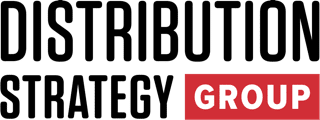In 2016, I built a quoting team from scratch. Like most distributors back then, we used Excel and Word to build every quote manually. We thought we were doing well because we had templates. We spent hours copying and pasting pricing, checking inventory, calculating margins, formatting proposals—completely reactive, painfully slow, and prone to error.
That approach was common. It was also inefficient and impossible to scale.
Today, that model is broken. In 2025, quoting isn’t just faster, it’s intelligent. And selling isn’t just consultative, it’s predictive.
Let’s start with the quoting side.
For many distributors, quoting remains the bottleneck. Reps—and now, CSRs still spend too much time building quotes, which pulls them away from higher-value interactions. That time sink translates directly into longer sales cycles, missed opportunities, and unnecessary costs.
Modern quoting tools solve that. Instead of manual spreadsheets, we now use AI-powered systems that connect directly to ERP and CRM data. These tools automatically pull real-time pricing, check inventory availability, apply freight and cost-to-serve data, and enforce margin floors. Quotes that used to take 30–45 minutes now take under 5—and they’re more accurate.
When Just Speed Won’t Get It Done
In wholesale distribution, especially across complex product catalogs with fluctuating cost inputs, speed alone isn’t enough. The quoting engine must account for supplier volatility, regional freight surcharges, and customer-specific pricing rules, which we had to manage manually in the past. When your team is dealing with 50,000+ SKUs, intelligent quoting isn’t a luxury—it’s survival.
But quoting speed is only part of the story.
I spoke recently with a veteran sales rep—30+ years in the business. He started using an AI-driven quote engine and now says he’s 25% more productive. But what stood out wasn’t just the efficiency. It was precision. “I’m much more accurate the first time—especially with pricing,” he said. No back-and-forth, no missed freight, no costly errors.
This evolution doesn’t replace people, it enables them. By automating the mechanics of quoting, you free your team to focus on the conversations that drive margin and wallet share. That shift—spending less time assembling quotes and more time advising customers—is what changes the game.
In 2019, we added our first AI-powered product recommendation engine. It was a leap forward—not because it made selling easier, but because it made selling smarter.
Spotting Opportunity
These tools became transformative when we rolled them out to our CSR team—people who had never been involved in sales conversations before. By giving CSRs visibility into buying patterns, purchasing gaps, and product pairings, they began spotting opportunities during routine calls and emails. Instead of just taking orders, they were suggesting relevant add-ons, identifying usage shifts, and proactively addressing customer needs.
The results were immediate: larger average order sizes, more cross-sells, and a noticeable uptick in margin contribution from the CSR group. Even better? They were energized by it. Many of them said it was the first time they felt like they were part of growing the business—not just maintaining it.
This is what predictive selling looks like in practice. And it’s not limited to outside reps or specific product categories. Everyone benefits—from seasoned account managers to inside sales to formerly “non-selling” CSRs.
One of the biggest wins? Substitution logic. In the past, if a primary item was out of stock, the quote stalled while someone chased down alternatives. Now, the system automatically recommends substitutes based on profitability, availability, and past preferences. That alone has saved us hours per week for the entire sales and service team.
What this means is simple: reps stop acting like order-takers and start acting like business partners—and CSRs get to act like sales enablers. Customers notice—and respond.
The Game Changer
But let’s be clear: AI alone doesn’t drive results. Behavior does.
Distributors that are winning in 2025 are the ones who aren’t just implementing tools—they’re rewiring their sales model. That means retraining teams, redefining roles, and realigning compensation to reward strategic engagement and margin growth. It means giving every customer-facing employee—not just reps—the confidence and capability to sell.
We had to completely redesign our sales scorecards. Instead of just tracking quote volume or revenue, we began measuring consultative touches, margin per quote, and cross-sell ratios. That shift changed the mindset across the org—everyone began focusing on value, not just volume.
The real unlock isn’t the tech stack—it’s how your people use it.
If you’re still quoting manually, still selling reactively, still building everything from scratch, you’re not just behind—you’re bleeding margin. Meanwhile, your competitors are quoting in minutes, surfacing new revenue automatically, and growing with leaner, smarter teams, and better customer conversations.
This isn’t about the future of sales. This is the present for high-performing distributors.
If you’re ready to transform your sales organization, join us November 11–13 at the Profit and Productivity Summit in Chicago. You’ll hear directly from distributor executives who are putting these tools to work, quoting smarter, selling better, and growing faster.
As Chief Operations Officer of a Distribution Strategy Group, I'm in the unique position of having helped transform distribution companies and am now collaborating with AI vendors to understand their solutions. My background in industrial distribution operations, sales process management, and continuous improvement provides a different perspective on how distributors can leverage AI to transform margin and productivity challenges into competitive advantages.

